Our comfortable home transformation is nearly complete. We now have thermally efficient ceiling insulation! Boy, does it make a difference.
So let me take you on a ceiling insulation top up journey.
A while back we booked a thermal assessment for our home with ecoMaster, a local company who operate out of Gisborne. They suggested that we needed to top up our ceiling insulation as the blown cellulose pulp (aka pulped newspaper) was not up to the job. We kind of new that, because whenever I had ventured into the roof space, I noticed that there were always varying depths of the pulp on top of the ceiling plaster board.
So, we saved our pennies and booked the installation.
The team from ecoMaster arrived on time as promised, and the two gents, Garth and Alex were nice blokes who knew their stuff. Funnily enough, they were just like us; green.
The product they used was called GreenStuf. It is made from recycled PET bottles.
It also does not contain any formaldehyde which is sometimes used as a binder to hold the fibres together. It is also made in Australia, so we are supporting local businesses.
Pretty cool stuff. We love the fact ecoMaster uses products that are made from recycled materials. When installed correctly, it provides an insulation value of R2.5.
The gents were kind enough to take some before and after photos for us while they were crawling around the roof space. They even found some areas that were void of insulation completely. No wonder we had rooms that were hot in summer.
Some of the spaces were fairly tight, so they certainly did a great job at fitting the stuff. During their brakes, Garth and Alex learnt about all the cool things we do to live a more sustainable lifestyle, and I even gave them a tour. They both talked about how they incorporate simple and sustainable living in their own lives. It was very refreshing to talk to them both.
Closer to the edge of the eaves, they found more areas that were void of blown pulp. I don’t know how they crawled in there, but they covered up the gaps.
Also there was a massive gap around the bathroom extractor fan, so they fitted a cover which is known as a top hat. It has two flaps that rise up when the fan is turned on. You can see that the gap is no more and the insulation is nice and tight around the top hat.
As for the downlight mitts that were installed a few weeks back, the insulation was able to be placed right up next to it. No more gaps around the light fittings, and no more heat ingress through these ceiling holes.
So did it work? Well today was proof that it did. It was a unseasonally warm spring day at 28°C (82.4 F). The inside temperature stayed a comfortable 22°C all day. Additionally, a few days ago it got down to 5°C in the morning and it was still a very comfortable 18°C inside without any heating (not that we have had any on all winter).
And the cost? All up it was $2107 including installation. Oh, and Kim gave them a few bars of soap. Not because they were dirty, but because no one leaves our place without a home-made gift! It is just the way we are.
We are due to have double glazing installed mid-October, so that should also reduce the insulation factor of the north facing rooms, which get the hottest in summer. Looking forward to having a more comfortable home during our Angry Summer and to reducing our reliance on air-conditioning! It should save us swags off our power bill.


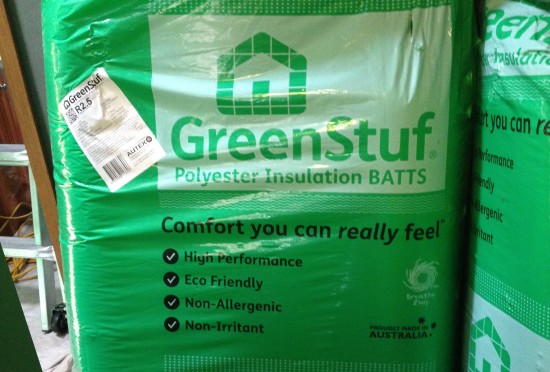
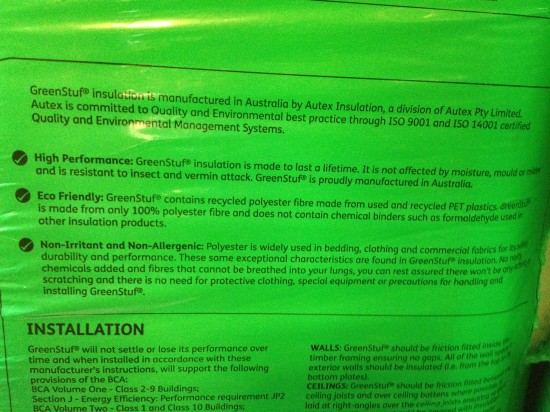
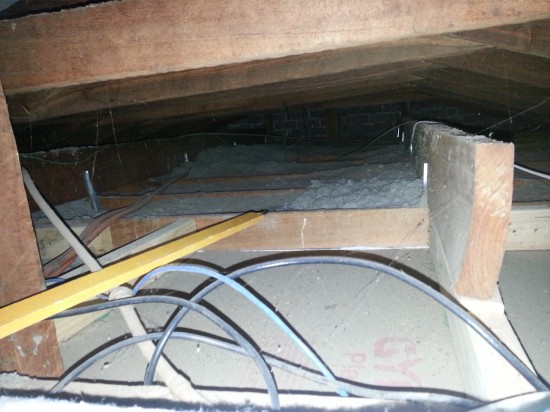
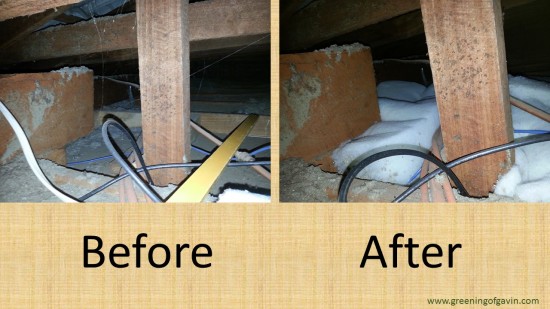
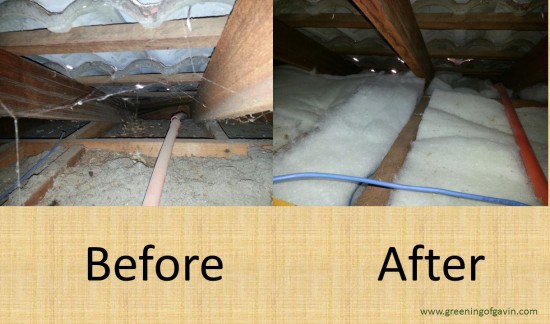
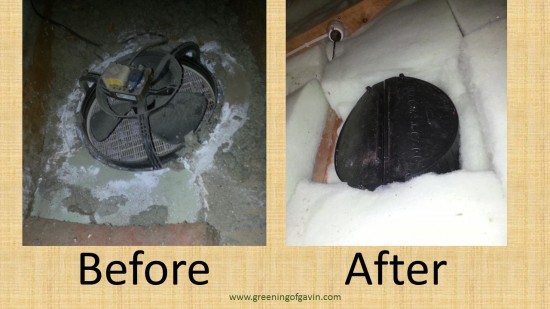
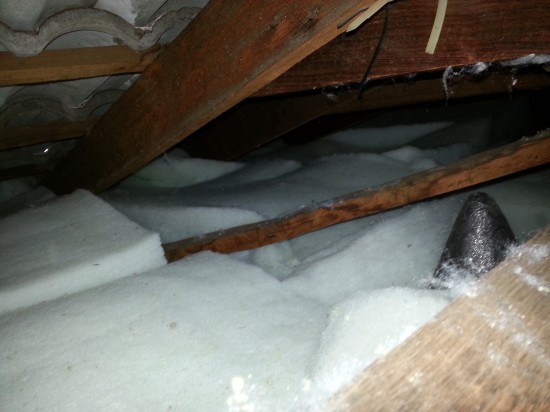
Cool (literally)
nice photos of the job Gav.
Cheers
Thanks Mick. Sorry to hear about your fence.
Also, hope you are on the mend.
Gav
Looks great, Gavin, thanks for sharing. The green credentials look good – but do you know if there is any off-gassing at all?
Thanks, Madeleine.x
Hi Madeleine. Apparently not. There was no typical VOC smell to the batts at all.
Gav
We had our insulation done in Autumn and we’ve noticed a MUCH warmer house over the winter and into the spring. I look forward to hearing updates as to how it helps balance the heat over summer. Have you considered those whirly bird things that extract ceiling heat?
Hi Jessie. We have one of those already on the roof to allow the heat to escape. It doesn’t help that the roof tiles are painted dark grey.
I have tried to convince Kim to get a lighter colour, but she is not budging at the moment.
Gav
We have painted our roof in a very light grey and from a distance it looks like metal finish (we have a corro roof though). With dark grey trims and the cream walls I think our place looks fantastic! Maybe if she sees our roof it might help change her mind. I’ll work extra hard to clean the joint up before inviting you up though. Extra impact and all that. 😉
Gosh you are tempting me Gav but i think ill get “the big secret” out of the way first.
Can’t wait until the cat is out of the bag!
You might want to look into getting the bathroom exhaust vented properly out through the roof; venting into the attic can cause moisture buildup there, and all sorts of nasty mold / mildew / rot problems.
I also live somewhere with much colder winters; I’ve got R-30 insulation in the attic, and R-19 between the finished basement (kept at 50 in the winter) and the first floor.
Thanks for the tip. In our dry climate, there is not much chance of mildew or rot.
Also, there is so much airflow up in the roof space, moisture does not build up.
If this was not the case, I would definitely take up your suggestion.
@silentclaw: It sounds like you’re quoting US R-values. The ones Gav mentioned are metric, which work out to roughly 1/6th of US R-values. So your R-19 equates to our R-3, and your R-30 equates to our R-5. Still, R-5 would be a very high value here in Australia – we generally don’t have the extreme cold to keep out, so don’t often go above about R-3 or R-3.5 in our rooves.
@Gav: The photos show the underside of your roof tiles. Have you investigated retro-fitting sarking?
Yes, US R values . . . that explains why I thought yours were so low! I didn’t know that the R values changed when dealing with metric countries 🙂